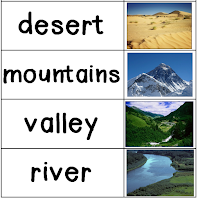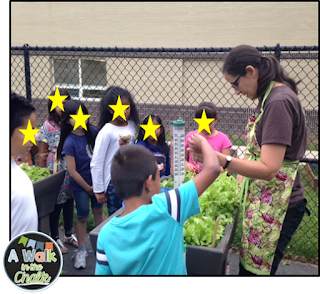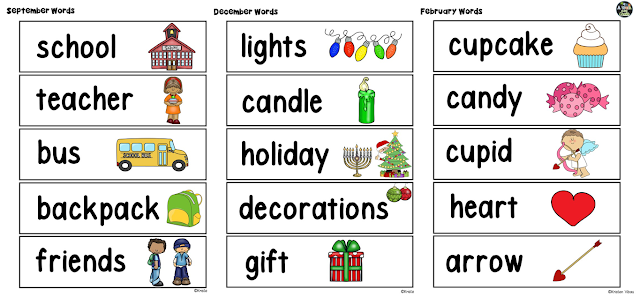A picture is worth a thousand words! Boy, this couldn’t be more true for a non-English speaker. Visuals are the main form of communication at this stage, and with Google Images at our fingertips, finding just the right visual is easier than ever before. But not just visuals, meaningful visuals. When creating your lessons, think about where you can add visuals to support understanding.
Also incorporate visual vocabulary resources that support students during independent work. Word walls with visuals are excellent tools for your newcomers. Word walls that support each content area, even better! Incorporate a “Seasonal Word Wall” as well to provide basic vocabulary exposure for your beginning language learners.
Here’s a vocabulary mini-office that supports students at their desks during independent work. Teach bigger kids? Put the mini office pages in a folder instead;)
A second grader using his mini-office during independent writing time.
2. Background Knowledge


3. Giving Directions
Directions should be simplified, repeated, and posted visually. Don’t ask your newcomer if he/she understands. They will probably nod their head yes, but in actuality will have little to no idea of what’s being asked of them.
If you ask your students to get out their “blue reading notebook,” hold up an example of what you are asking for so that your newcomer can see what you want.
Speak clearly facing towards your students. If your back or side is facing them, your newcomer will have additional difficulty in understanding.
The “buddy” you’ve assigned to your newcomer can also assist in helping to get the student started with the assigned activity. This is quick and shouldn’t impede from the “buddy” getting started him/herself.
4. Differentiated Materials
English Explorers books by Benchmark Education are one of my favorite resources. Luckily, in most of the schools I have worked, they have either already had many of these content rich books, or were able to order them. One year I worked at a school that lacked resources, so I wrote a grant and was awarded enough money to purchase several sets. I love these books because they are content specific to the science and social studies standards, and are effectively supported with visuals. AND, they are leveled according to your English language learners proficiency levels! Gotta love that!
Students learn best by doing, AND by having opportunities to talk about and reflect on their learning. Hands-on activities, small co-operative learning groups, and science experiments are just a few of the effective ways to best support your newcomers in their learning. Not only is the content more comprehensible when presented, but it also encourages student output.
  |
| Salad Science! Students learn about PLANTS and the process of growing their own food, from seed to table. Here students are watering their freshly planted lettuce seeds. |
  |
| Lettuce! |
  |
| Salad Party! The entire 3rd grade enjoyed eating their freshly harvested lettuce and creating a colorful salad! |
With the use of visuals, scaffolding, and opportunities to interact with the content, your newcomers will be able to successfully access the curriculum alongside their native English speaking peers. Give your newcomers opportunities to be successful, to use the language with support, and to communicate without stress and watch their language skills, content knowledge, and confidence grow!
This post is a continuation of “Part 1: Environment,” found here.
Part 3: Assessments










